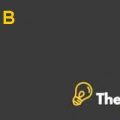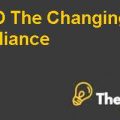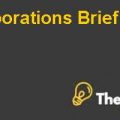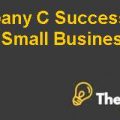Costco Wholesale Corporation Case Study Solution
Introduction:
Margarita Torres had bought shares of Costco Wholesale Corporation in 1997 as a slice for her personal stock collection. She further took to her holdings in the company, from time to time, when the company sold stock between the years 1997 and 2002, which she figured was a reasonable estimate.She hadn’t sold any of her shares, till that time.
She has been watching Costco grow from 265 warehouses to 365 worldwide, and showing a steady growth in sales revenue,from $21.8 billion to $34.1 billion, she wanted to know the factors directed to such satisfactory progress. She also sought to determine whether or not those factors would hold steady while the company moves forward.
At that time, the company was a particular type of retailers called wholesale clubs. Dis similar to other retailers, wholesale clubs required customers to take out annual memberships to shop at their stores. Costco functioned as a chain of warehouses that effectively sold food and general merchandise at large range of discounts to member customers. The company had a capacity to up hold small margins by selling items in a large amount, continuing with minimizing operating expenses and rotating inventory over speedily.
Costco’s nearby rivals were SAM’S Club (a division of Wal-Mart) and BJ’s Wholesale, which both worked as wholesale clubs. Other opponents included general discounters (such as Wal-Mart), country global of retailers (such as Sears), grocery stores (such as Safeway) and specialty discounters (such as Best Buy).
Torres wanted to invest and her priority for investment was Costco, as she was already a member of the company. She was impressed with the company’s low prices and observed that her local Costco was always full of people.
She took a decision to research about the company from its annual reports. She concluded on the basis of her research that the company had marvelous potential for progress, strong operational efficiency, a devoted team and a reasonably priced stock.
In July 2002, she got well-earned money from her investment and decided it was time to up-date her analysis to evaluate whether the company was still operating efficiently and steadily as per the previous graph.
Background of the Company:
Costco Wholesale Corporation was established in 1975 and ran its operation of wholesale clubs at California,United States of America. Their first club opened in San Diego and was named Price Club, operating on a membership basis. The club sold merchandises in bulk to small business owners such as beverages and tobacco products for resale in their stores. The club also sold to customers who purchased products for their personal use.
After appreciable working of the Price Club, the club exhausted rapidly all over California and the West, along with other location sin Canada and Mexico. After these extraordinary results, the company compounded with Costco in 1993. Efficiently performing the operations of the same business model as Price Club, Costco Wholesale was established in 1983 by James Sinega land Jeffrey Brot man.
The company was introduced publicly in 1985 and comfortably continued to make investments for expansion in the Pacific Northwest and Canada. In 1985, stock sales were $336 million and membership fees was just over $4 million.
Even though the company achieved immesely through their concept of wholesale clubs, serious antagonism was still following the company. Nevertheless, Wal-Mart came into the industry by creating SAM’S Club, Kmart opened Pace Clubs and BJ’s Wholesale initiated functions in the Northeast.
At the beginning of the 1990’s decade, the industry had a range of players who gave quite a challenge to the company. In 1993, a flood of consolidation took place, as SAM’S acquired Pace Club and Costco purchased Price Club (creating Price/Costco, which later shortened its name to just Costco). This two primary wholesaler, Costco and SAM’S, took positive control of 85 percent of the market.
Costco Strategy for Operations:
Costco was one of the leading wholesale clubs in the entire wholesale industry, having a sale volume of $34 billion in the year 2001. The variance of Costco and SAM’S is that Cost co targets wealthier customers, small business owners and middle-class shoppers. Nevertheless, Costco had 365 warehouses, which was lesser than SAM’S 528 stores.
Costco has a key point is its history with Price Club. Costco took great pride in having invented and developed the club storage concept. The company has a valuable policy to charge for its products, which is not more than 14 percent of the distributor’s price. In comparison, the retailer habitually charges 25 to 40 percent on the same product.The management has mainly focused on supplying their product on lowest per unit price which means selling in bulk amount for running many operations efficiently. For example, a 100 fl. ounce container of Tide liquid detergent was sold at a traditional retailer for $8.99, or $0.0899 per fly.Costco offers the same detergent in a 300 ft. ounce bottle at the cost of $17.99 to customers or $0.06 Per fl. ounce. Costco was capable of selling at such a low per unit cost precisely because of its bulk packaging.
However, the container’s size was not maximized with the aim of compelling consumers to buy more goods.Costco had a program of not increasing the size of a tank without it leading to a lower per unit cost. This is because that would not sell Tide detergent in containers greater than 300 ft. ounces if the concluded price were less than $0.06 per flounce. They had sincerely believed that the customers would increase, if they provide reduced unit cost of goods to the client.
Costco was a mixed blessing for manufacturers. On the one hand, Costco offered a broad distribution channel that brought increased revenues. Also, Costco only purchased a handful of SKUs from its dealers. This medium facilitated manufacturers in heavily reducing their production costs which lead them to increase their production volume.For instance, when Costco ordered toilet paper from Kimberly-Clark, it ordered one color, one print, and one ply.
Costco Wholesale Corporation. Harvard Case Solution & Analysis
This method allowed Kimberly-Clark to set the production line for only once to run continuous batches of the same product. This approach produce slow cost per production unit for Kimberly. Besides, Costco could request its dealer that production savings value be delivered onto itself in the form of lower prices because Costco was a dominant purchaser.Costco passed these savings on to its customers. As a result, the producer would see increased revenues, but increases in profits would be limited.These consequences decreased the profits throughout the supply chain.However, there was a growth in selling volume. Costco came to be dear to its customers by providing those saving son their purchases......................
This is just a sample partial case solution. Please place the order on the website to order your own originally done case solution.













